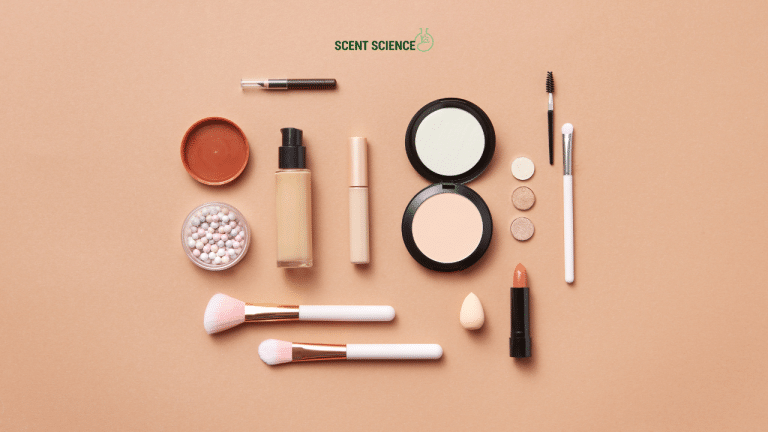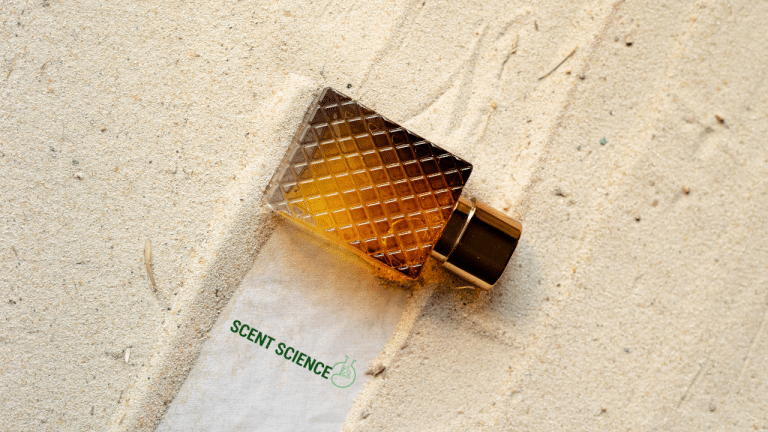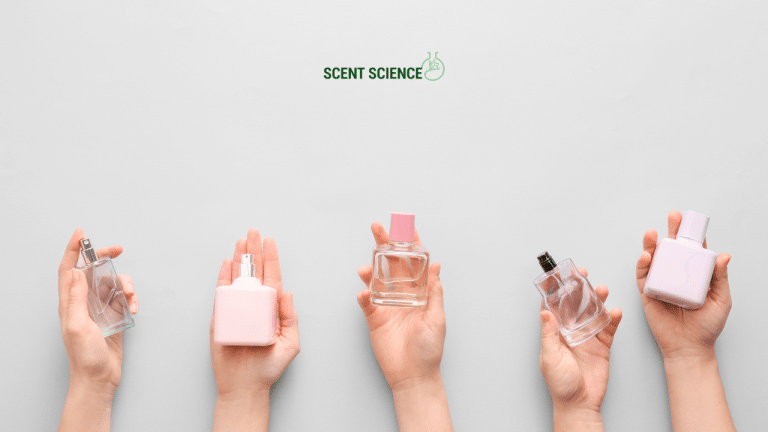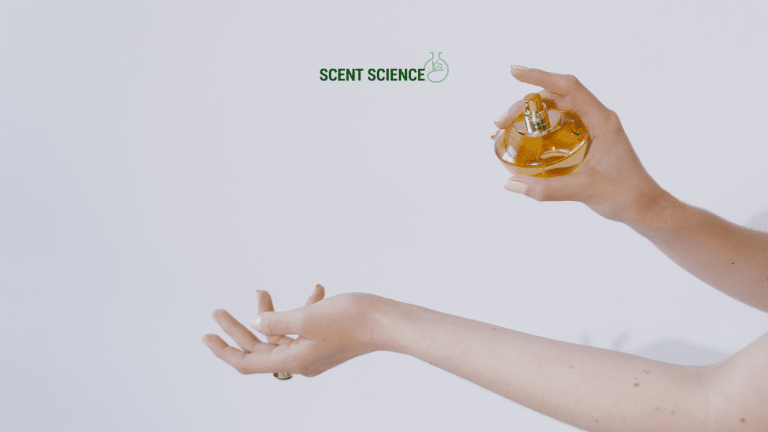Picture yourself standing amidst endless fields of blooming flowers, breathing in the heady mix of various floral scents, each inhale more refreshing and invigorating than the last. Now imagine capturing this moment in a bottle. This is the allure of eco-friendly perfumes—perfumes that don’t just help you smell appealing, but also keep Mother Nature blissfully intoxicated.
But wait a minute, you might wonder, does my perfume really hurt the environment? Well, unfortunately, traditional fragrances often cloak a hidden world of nasties. Containing synthetic chemicals and sometimes even endangered plant extracts, these scents can leave a surprisingly heavy ecological footprint.
But don’t fret. Today, we’re going to dive into the rejuvenating world of eco-friendly perfumes. Trust me, your search for natural, sustainable fragrances is about to smell a whole lot sweeter.
Table of Contents
ToggleWhy Choose Eco-Friendly Perfume?
The Chemical Culprits in Traditional Perfumes
First, let’s talk about the synthetic stuff floating around in most conventional fragrances. It’s not just a random concoction. Conventional perfumes are often packed with phthalates—those tongue-twisting chemicals that might just harm more than they charm. But it’s not only the inviting aroma that makes them a culprit. These chemicals are often linked to disrupting ecosystems when they eventually wash down the drain, finding their way into rivers and oceans.
Plus, there’s more: synthetic musks, another common ingredient. These delightful scents don’t readily break down once they mingle with nature. Imagine them stubbornly sticking around, affecting aquatic life and even seeping into wildlife and our own bodies through the food chain. It’s honestly a cocktail of woes we could live without.
Ingredients Matter
What goes into sustainable, eco-friendly perfumes makes them dazzle. Typically crafted from natural sources like essential oils, extracts, and absolutes, they derive their essence from botanical materials or sustainable synthetics—think citrus peels, floral absolutes, and plant-based alcohol.

These thoughtfully sourced ingredients result in fragrances that not only feel good to wear but also boost biodiverse agricultural systems. Plus, by choosing biodegradable packaging, your perfume may do more than just look pretty on the shelf. Sustainable brands make sure to use materials like responsibly sourced glass, and recycled and recyclable packaging. Eco-friendly perfume often embodies respect for Earth’s intricate balance.
Crafting Eco-Friendly Perfume: The Scientific Flair
Understanding the Science
Creating an effective and eco-friendly perfume blends science smoothly with artistry. It’s that nifty balance between inhalation chemistry—the interaction of volatile molecules with our noses—and aromacology, which is basically how we experience these pleasant smells.
Mixing Primary, Secondary, and Tertiary Notes
Think jazz but for your sense of smell. Perfume has its own rhythm. Remember the blend—the primary (top), secondary (heart), and tertiary (base) notes. It’s essentially how well a perfume starts, how beautifully it evolves, and its lasting impression.
A stellar eco-friendly perfume carefully crafts this note pyramid using sustainably sourced ingredients. Top notes might feature delicate citrus or fruitiness derived from essential oils. These whispering top notes are soon carried by charming floral or herbal intermediate notes forming the heart of the fragrance like lavender or rose extracts, finally anchored by warm, woody base notes.
Say Hi to Solid and Oil-Based Perfumes
Surprise, eco-friendly perfumes have an adaptable nature! Besides the regular sprays, they come mighty handy in solid and oil-based forms. Ever mused about the thrills of pop-in-your-bag glass roller perfume? Well, oil perfumes in eco-friendly formats are genuinely kind to you as they are carrying companions—sans the overpowering alcohol splash. The scent settles gently on your skin and lasts throughout the day, gradually releasing layers.
Making Eco-Friendly Perfumes Part of Everyday Life
Start Shopping for Natural Fragrances

When you decide to transition—or even try—eco-friendly perfumes, give priority to specific brands ticking sustainability boxes. Shortlist brands with transparency, boasting openly about their ingredient sourcing, production practices, carbon footprints, and packaging efforts.
Loads of niche and indie brands ace the eco-friendly criteria as they experiment more with natural formulas, limited edition scents, and prioritize genuine change over mass-produced formulas.
Here’s a real tip: Check for certifications. Conscious brands often display cruelty-free, vegan, or organic seals—actively gauging steps towards sustainability standards.
DIY: A Dash of Perfume Wizardry
Not about that off-the-shelf life? Want a deeper connection with your scents? Dive into crafting your own eco-friendly perfumes right home! Consider this ‘stir it yourself’ fun.
- Choose Your Notes: Go shopping for undiluted essential oils. Go for pure rose, lavender, or sandalwood. Think combinations like herbal and floral, perhaps with a slight citrus zing.
- Selection of Base Oil: Picking against alcohol-based perfumes often in market blends, here’s where you choose classy carrier oils like jojoba or almond oil to hold those essential oils right.
- Mix With Care: Quickly remember the proportions—a teaspoon of carrier oil; then add 2-3 drops starting with base notes, followed by heart, then high notes. Shake like a potion maker!
- Leave to Blend: Let your blend age gracefully. Store in a cool, dark spot for about 48 hours, and shake occasionally to activate friendly particles mingling within.
- 5. **Customize It: Test fragrances on a cotton pad, adjust with drops till harmony sings. Personalizing means daring to balance science and unique scent artistry.
Eco Conscious Fun: Among the Common Mistakes to Avoid

Skimping on Quality Ingredients
Remember when buying natural, eco-friendly perfumes that cheap fillers can sneakily disguise stripped-down qualities. Pay attention to those ingredient lists. You deserve genuine top notes and authentic base-hitters, not solvents and synthetics wearing botanical attire.
Choose Wisely with Longevity in Mind
Longevity is a blessing and bane—that factor how different perfumes last on skin. Natural perfumes evolve outside of stringent chemical formulations. Their charm tends more delicate and might not have industrialized perfumes’ iron grip of longevity. Adjust to this natural beat, layer for intensity like forethought armor. Trust me, the comfort is ethereal despite fewer hours.
Bringing Earth Care Into Conscious Label Choices
With our scent landscape evolving, let’s embark wisely. Bringing eco-friendly perfume into your daily symphony flips towards more delicate contributions to sustainability efforts. Highlights here? Being informed, one sniff at a time, lifts responsible brands proving genuine commitment over commercial copycatting.
It’s equal parts playing the chemist and cherishing genuinely eco-conscious endeavors and authentic new-age muses engaged cosmetically and conceptually federalizing nature’s adopted side.
Describe scent shockwaves through conversations ripe in advocate-fragrant notes while endorsing personal nose picks.
It’s time to take thrills fruitfully aromatic with eco adventures ushering heartwarming kisses toward green sensibilities… Just imagine!
Remember, this vibrant journey into eco-friendly perfumes makes you feel like capturing each day’s flowerful memory into tiny vials while waving au revoir to chemical tumult forever. Indulge; reveal with panache. You deserve it.
Frequently Asked Questions
How often should I wash my face mask to prevent maskne?
To prevent maskne, it is crucial to wash your face mask regularly. For fabric masks, wash them after every use, similar to how you would wash your underwear[2][3][4]. Disposable masks should be tossed after each use to prevent the buildup of bacteria and other contaminants[3][5>.
What type of skincare products are best for preventing maskne?
For preventing maskne, use skincare products that are oil-free or noncomedogenic. These products, such as gentle cleansers, moisturizers, and sunscreens, help prevent clogged pores and reduce the risk of acne. Look for products containing salicylic acid or benzoyl peroxide for their acne-fighting properties[1][3][4>.
How can I reduce friction and irritation caused by wearing a face mask?
To reduce friction and irritation, choose a mask that fits well and is made from breathable fabrics like cotton or bamboo. Loosen the mask straps, use pads under the straps, or consider a headband-style mask to minimize friction. Taking brief breaks to remove the mask and allow your skin to breathe can also help[2][3][5>.
What are some additional tips to prevent maskne while wearing a face mask?
In addition to regular mask washing and using the right skincare products, avoid touching your face, skip makeup or use noncomedogenic makeup, and moisturize your skin to keep it hydrated. Also, limit the use of active ingredients like retinol or benzoyl peroxide during the day when wearing a mask, and consider using a topical antimicrobial cream to prevent bacterial buildup[1][3][4>.
References







